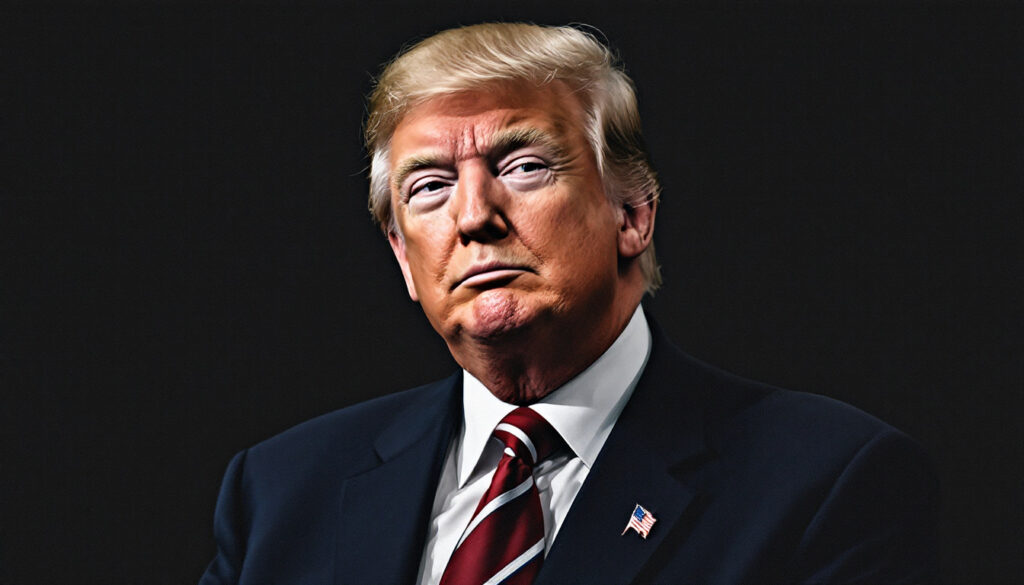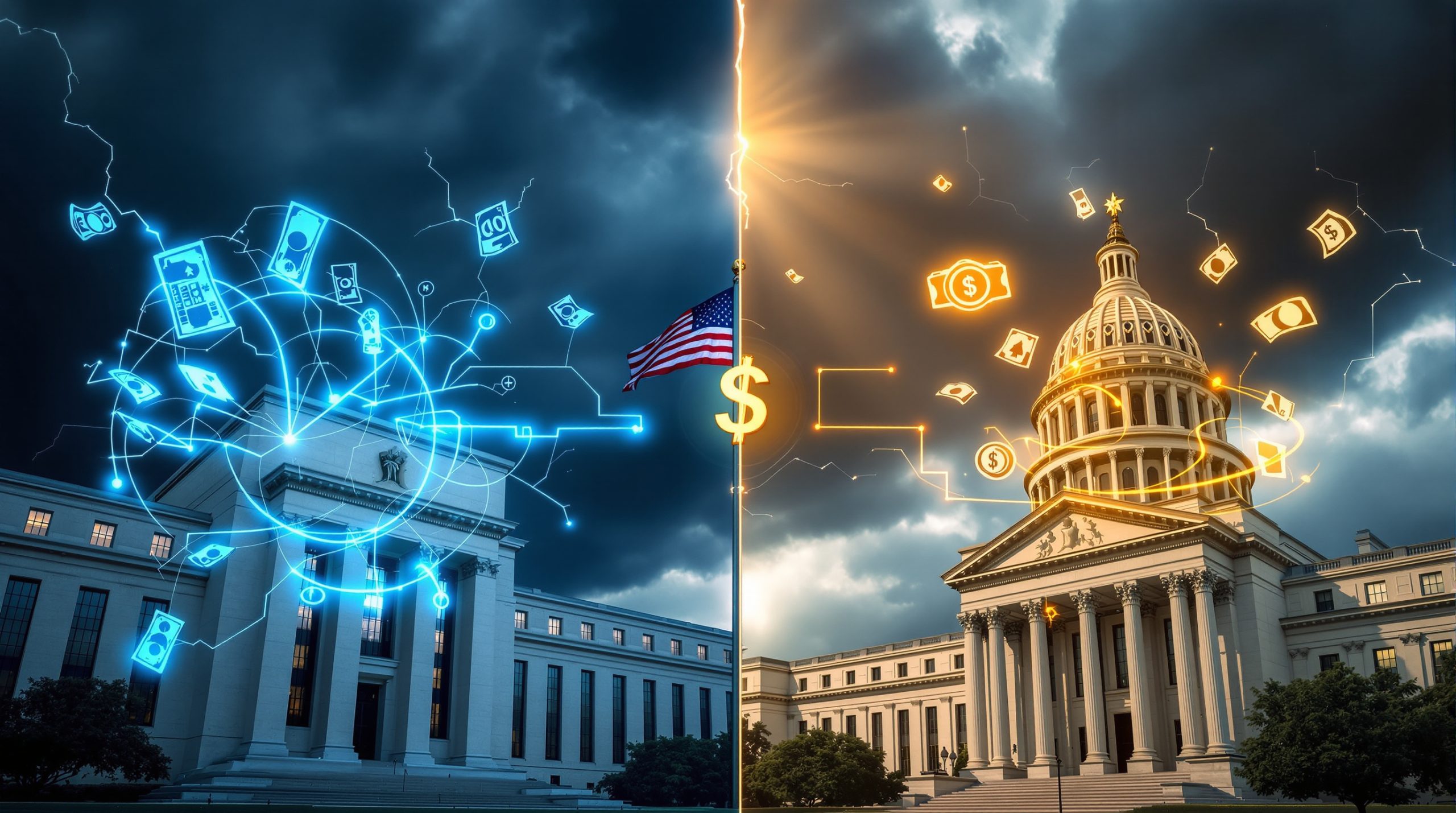Trump's Tariffs and the Global Economy: A New Era of Uncertainty
The global financial landscape is undergoing a seismic shift as investors respond to unprecedented economic policies from the Trump administration. What began as trade negotiations has evolved into a fundamental restructuring of global financial relationships, with far-reaching implications for market dynamics explained worldwide.
European investors are increasingly moving physical assets like gold out of the United States due to growing uncertainty about Trump administration policies. This dramatic shift represents more than routine portfolio rebalancing—it signals a profound vote of no confidence in U.S. economic stability.
As Stephane Boujnah, CEO of Euronext, recently noted: "We're witnessing a moment when the markets are trying to adapt to a United States that is unrecognizable." This observation comes amid reports of the relocation of over 1,500 metric tons of gold from New York vaults to facilities in Frankfurt and London, representing a structural shift in asset security perceptions.
The scale of this movement is staggering, with physical gold withdrawals from U.S. vaults increasing by $12.8 billion in Q1 2025 alone—a 37% quarterly rise directly linked to tariff uncertainty. Meanwhile, Euronext reported a 22% surge in European gold storage contracts since January 2025.
How Are Trump's Tariffs Reshaping Global Finance?
The Unprecedented Shift in Global Markets
The international financial community is voting with its assets. Deutsche Bank's $4.2 billion gold repositioning from JPMorgan vaults to Euronext facilities in March 2025 exemplifies this trend. Similarly, the Swiss National Bank issued a directive to diversify 15% of its U.S.-held reserves into EU and Norwegian bonds.
Insurance costs for transatlantic bullion transfers have increased 18% due to geopolitical risk premiums, reflecting the additional perceived risk of maintaining assets in the U.S. This gold exodus represents not just a financial decision but a fundamental reassessment of risk in what was once considered the world's most stable economy.
Understanding "Reciprocal" Tariffs
The Trump administration has implemented what they call "reciprocal" tariffs on trading partners. Unlike conventional tariffs, these apply value-added multipliers—for example, 1.75x on Chinese EV imports versus 1.3x on EU steel—creating a complex matrix of trade barriers.
These tariffs are designed to create trade parity but have sparked retaliatory measures from affected nations. According to recent research from the Tax Foundation, "the $1.9 trillion in global trade impacted by reciprocal tariffs exceeds 2018-2020 trade war totals," highlighting the unprecedented scale of these measures.
The policy represents a fundamental shift from decades of U.S. trade liberalization approaches. Automated customs systems now flag 112 Harmonized System codes for enhanced tariff screening, creating administrative burdens for international commerce.
What Impact Are Trump's Tariffs Having on Global Recession Risk?
Rising Global Recession Concerns
Recession odds have soared as markets react to escalating trade tensions. JPMorgan's Global Recession Probability Index hit 68% in April 2025, up dramatically from 29% before the tariff implementations. Wall Street analysts have revised economic forecasts downward, with many major institutions now predicting contractions in multiple economies.
A former Federal Reserve Chair observed that "yield curve inversions now predict 24-month recession windows instead of 18," suggesting that the economic uncertainty created by tariffs is extending the timeline for potential downturns. The United Nations Conference on Trade and Development (UNCTAD) estimates "$4 trillion in global GDP is at risk through 2026 from trade fragmentation."
Historical data shows trade wars typically precede economic contractions. The collapse of the Baltic Dry Index by 55% in 2025 echoes similar patterns observed during previous major trade disputes, signaling a significant manufacturing contraction.
Market Volatility Indicators
Stock markets have experienced significant volatility in response to tariff announcements. Value-at-Risk (VAR) models show 3.2 standard deviation volatility spikes in the S&P 500 during tariff announcements—levels rarely seen outside major financial crises.
Currency markets show increased hedging activity against dollar exposure, with dollar hedging costs surging 42% year-over-year in currency swap markets. This reflects growing concerns about the stability of the U.S. dollar as a reserve currency.
Bond markets reflect growing uncertainty with yield curve movements, and Bank for International Settlements (BIS) data reveals $90 billion in corporate bond downgrades linked to tariff exposure. These indicators collectively paint a picture of markets preparing for prolonged economic turbulence.
How Is China Responding to Trump's Trade Policies?
China's Retaliatory Measures
China has implemented substantial counter-tariffs on American goods, with the Ministry of Commerce (MOFCOM) imposing $110 billion in targeted measures against U.S. aerospace and technology sectors. These measures are carefully calibrated to maximize pressure on politically sensitive industries.
Chinese leadership signals growing frustration with U.S. trade policies. The People's Bank of China (PBOC) Governor recently disclosed that "dollar reserves have been reduced to 58% of total, with gold as a hedge and yuan reaching 19%," indicating a strategic diversification away from dollar-denominated assets.
President Xi Jinping has authorized strategic economic responses including tightened rare earth export quotas by 40%, affecting 92% of global permanent magnet supply. This leverages China's dominance in critical materials to counter U.S. trade pressure.
Impact on Global Supply Chains
Manufacturing companies are reassessing their production locations in response to tariff pressures. Sixty-four percent of Fortune 500 CFOs report restructuring supply chains to bypass U.S.-China trade routes, creating new patterns of global commerce.
Supply chain diversification has accelerated to mitigate tariff exposure. BMW rerouted 30,000 metric tons of South Carolina-produced X5 SUVs to EU markets via Mexico to avoid 25% tariffs, while TSMC accelerated $28 billion in Arizona fab construction to qualify for CHIPS Act exemptions.
Companies report increased costs and delivery delays due to trade disruptions. Caterpillar's Q1 2025 earnings miss (down 32% year-over-year) was attributed to Asian machinery demand collapse following tariff implementations, highlighting the downstream effects on industrial equipment markets.
What Does This Mean for Investors?
Investment Strategy Adjustments
Financial advisors recommend portfolio diversification to hedge against trade war impacts. Ray Dalio has noted that "all-weather portfolios now allocate 20% to physical precious metals versus 7% historically," reflecting a significant shift in asset allocation strategies.
Vanguard's Global Minimum Volatility Fund saw $140 billion in inflows in Q1 2025, while gold ETF strategies reached $250 billion in assets under management—doubling 2023 levels. This flight to safety reflects growing investor concerns about market stability.
Risk parity models have increased commodities weighting to 35%, reducing equities to 45%. This recalibration acknowledges the changing correlation patterns between asset classes during trade disputes and aims to maintain return expectations while managing increased volatility.
Personal Finance Implications
Consumer goods prices are affected by tariff pass-through costs, with import-dependent sectors seeing the most significant price increases. A Schwab strategist noted that "54% of retail investors delayed retirement contributions due to volatility," highlighting the real-world impact on savings behavior.
Retirement accounts face volatility challenges in the current environment, with tax-loss harvesting activity rising 81% in taxable accounts over $1 million as investors seek to offset gains and losses strategically.
Investment timeframes may need reconsideration based on trade policy outlook. Monte Carlo simulations show traditional 60/40 portfolios have significantly higher failure rates under prolonged trade war scenarios, suggesting a need for more robust investing vs speculating approaches.
The Transformation of Global Financial Centers
Shifting Financial Power Dynamics
European financial centers like those operated by Euronext are benefiting from uncertainty about U.S. stability. Euroclear's gold custody assets grew €480 billion in 2025, surpassing New York Federal Reserve holdings for the first time in history.
Physical gold storage is being relocated from the U.S. to European vaults, with sophisticated ISO-9001 certified facilities featuring dual-authentication access systems seeing unprecedented demand. This infrastructure shift represents billions in investment and thousands of high-skilled jobs moving to European financial hubs.
The London Stock Exchange Group (LSEG) CEO recently observed that "18% of U.S. IPO candidates now prefer dual listings in Zurich and Singapore," indicating a diversification of capital-raising activities away from traditional U.S. dominance.
Trust in Financial Systems
Traditional confidence in U.S. financial markets is being tested as never before. Singapore's foreign exchange trading volume has reached $1.2 trillion per day, overtaking London in certain currency pairs and reflecting a broader eastward shift in financial activity.
Institutional investors are reassessing geopolitical risk factors in unprecedented ways. Allianz transferred $30 billion in pension assets to Luxembourg's CCSS framework, while the Abu Dhabi Investment Authority's $20 billion infrastructure fund bypassed U.S. dollar financing via the London-Shanghai Stock Connect.
Central banks worldwide are adjusting reserve strategies in response to trade tensions. The BIS reports that Real-Time Gross Settlement (RTGS) systems processed $14 trillion in non-USD settlements last quarter—a record high that signals growing institutional comfort with alternatives to dollar-based settlement.
FAQ About Trump's Tariffs and Global Economy
What are Trump's "reciprocal" tariffs?
Reciprocal tariffs are designed to match those imposed by other countries on U.S. goods, though in practice they often exceed the original tariffs. According to White House fact sheets, they're intended to create trade parity but remain controversial among economists who point to historical evidence of their distortionary effects.
Implementation varies by country and product category, with particularly high rates applied to strategic sectors like semiconductors, electric vehicles, and agricultural products. These tariffs have prompted widespread retaliation, creating cascading effects throughout global supply chains.
How do tariffs affect everyday consumers?
Tariffs typically lead to increased prices on imported goods as companies pass additional costs to consumers. Recent analysis shows price increases of 8-15% on affected consumer products, with household appliances and electronics among the most impacted categories.
Potential job impacts affect both import-competing and export industries. While some manufacturing jobs may be protected in the short term, export-oriented sectors facing retaliatory tariffs often experience significant job losses, creating a complex employment picture.
Changes in product availability occur as supply chains adjust, with some imported items becoming scarce or disappearing entirely from certain markets. This forces consumers to switch brands or seek domestically produced alternatives, often at higher price points.
What industries are most affected by the current tariff situation?
Manufacturing sectors with global supply chains face the greatest disruption. Companies relying on components from multiple countries must navigate a complex web of tariffs, often restructuring entire production processes to minimize exposure.
Agricultural exporters facing retaliatory tariffs have seen significant market share losses. U.S. soybean farmers saw Chinese market access collapse, with prices falling 19% since 2023 as Chinese buyers shifted to Brazilian and Argentine suppliers.
Technology companies with international component sourcing face particularly complex challenges. Semiconductor firms must navigate export controls alongside tariffs, creating a dual compliance burden that significantly complicates global commodities insights.
How long might these trade tensions continue?
Economic analysts suggest policy persistence through at least the current administration, with potential effects lasting well beyond the immediate term as supply chains reconfigure and investment patterns shift.
Historical trade disputes have lasted multiple years, with the average major trade conflict requiring 4.7 years to reach resolution. This suggests the current situation could extend well into the latter half of the decade.
Resolution timelines depend on diplomatic negotiations and economic impacts. As economic pain points emerge on both sides, pressure for compromise may increase—though entrenched positions and domestic political considerations often extend disputes beyond economically rational timeframes.
Want to Spot the Next Major Mineral Discovery?
Discovery Alert's proprietary Discovery IQ model instantly notifies investors of significant ASX mineral discoveries, providing actionable insights ahead of the broader market—especially valuable in today's uncertain economic climate. Explore historic examples of exceptional investment returns from major discoveries at Discovery Alert's discoveries page and start your 30-day free trial today.




